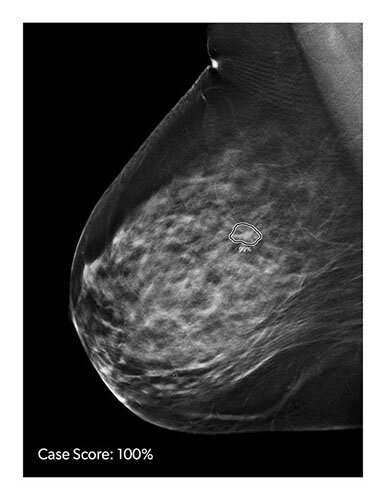RSNA Officially Publishes First Dataset of Annotated COVID-19 Images
|
By MedImaging International staff writers Posted on 22 Dec 2020 |

Illustration
The Radiological Society of North America (RSNA; Oak Brook, IL, USA) and the RSNA COVID-19 AI Task Force have announced that the first annotated data set from the RSNA International COVID-19 Open Radiology Database (RICORD) has been published by The Cancer Imaging Archive (TCIA).
Radiologists have played a pivotal role in managing the pandemic, particularly when other testing methods are unavailable or when clinicians seek imaging data to inform treatment decisions. Although prediction models for COVID-19 imaging have been developed to support medical decision making, the lack of a diverse annotated data set has hindered the capabilities of these models. RSNA launched RICORD in mid-2020 with the goal of building the largest open database of anonymized COVID-19 medical images in the world. It is being made freely available to the global research and education communities to gain new insights, apply new tools such as artificial intelligence and deep learning, and accelerate clinical recognition of this novel disease.
The RSNA COVID-19 AI Task Force hopes that RICORD will serve as a definitive source for COVID-19 imaging data by combining the contributions and experiences of medical imaging specialists and radiology departments worldwide. The RICORD data collection pathway enables radiology organizations to contribute data to RICORD safely and conveniently. It provides sites with guidance for data sharing and serves to standardize exam parameters, disease annotation terminology and clinical variables across these global efforts. Importantly, it connects to sustainable storage infrastructure via the US National Institutes of Health.
Created through a collaboration between RSNA and the Society of Thoracic Radiology, the initial group consists of 120 COVID-19 positive chest CT images from four international sites. This data set represents the first published component of RICORD, and RSNA’s first contribution to the Medical Imaging and Data Resource Center (MIDRC), a consortium for rapid and flexible collection, artificial intelligence analysis and dissemination of imaging and associated data. The RSNA COVID-19 AI Task Force will continue to update and expand both the volume and variety of data available in RICORD. A collection of COVID-19 negative chest CT control cases is in the pipeline for publication soon, along with a labeled set of 1,000 COVID-19 positive chest X-rays. An even larger set of CT and X-ray images has been submitted to RICORD and is currently being processed.
“RSNA was able to draw on relationships established from prior machine learning challenges to quickly put together a COVID-19 AI Task Force,” said Carol Wu, M.D., a radiologist at MD Anderson Cancer Center and a member of the RSNA task force. “Contributing sites, already proficient at sharing data with RSNA, were able to quickly process necessary legal agreements, identify suitable cases, perform image de-identification and transfer the images in record speed.”
“RSNA is extremely proud to be part of the MIDRC effort,” said Curtis Langlotz, M.D., Ph.D., RSNA Board liaison for information technology and annual meeting. “It will build a valuable repository of data for research to address the current pandemic and will serve as a model for how to collect and aggregate data to support imaging research.”
Related Links:
Radiological Society of North America
Radiologists have played a pivotal role in managing the pandemic, particularly when other testing methods are unavailable or when clinicians seek imaging data to inform treatment decisions. Although prediction models for COVID-19 imaging have been developed to support medical decision making, the lack of a diverse annotated data set has hindered the capabilities of these models. RSNA launched RICORD in mid-2020 with the goal of building the largest open database of anonymized COVID-19 medical images in the world. It is being made freely available to the global research and education communities to gain new insights, apply new tools such as artificial intelligence and deep learning, and accelerate clinical recognition of this novel disease.
The RSNA COVID-19 AI Task Force hopes that RICORD will serve as a definitive source for COVID-19 imaging data by combining the contributions and experiences of medical imaging specialists and radiology departments worldwide. The RICORD data collection pathway enables radiology organizations to contribute data to RICORD safely and conveniently. It provides sites with guidance for data sharing and serves to standardize exam parameters, disease annotation terminology and clinical variables across these global efforts. Importantly, it connects to sustainable storage infrastructure via the US National Institutes of Health.
Created through a collaboration between RSNA and the Society of Thoracic Radiology, the initial group consists of 120 COVID-19 positive chest CT images from four international sites. This data set represents the first published component of RICORD, and RSNA’s first contribution to the Medical Imaging and Data Resource Center (MIDRC), a consortium for rapid and flexible collection, artificial intelligence analysis and dissemination of imaging and associated data. The RSNA COVID-19 AI Task Force will continue to update and expand both the volume and variety of data available in RICORD. A collection of COVID-19 negative chest CT control cases is in the pipeline for publication soon, along with a labeled set of 1,000 COVID-19 positive chest X-rays. An even larger set of CT and X-ray images has been submitted to RICORD and is currently being processed.
“RSNA was able to draw on relationships established from prior machine learning challenges to quickly put together a COVID-19 AI Task Force,” said Carol Wu, M.D., a radiologist at MD Anderson Cancer Center and a member of the RSNA task force. “Contributing sites, already proficient at sharing data with RSNA, were able to quickly process necessary legal agreements, identify suitable cases, perform image de-identification and transfer the images in record speed.”
“RSNA is extremely proud to be part of the MIDRC effort,” said Curtis Langlotz, M.D., Ph.D., RSNA Board liaison for information technology and annual meeting. “It will build a valuable repository of data for research to address the current pandemic and will serve as a model for how to collect and aggregate data to support imaging research.”
Related Links:
Radiological Society of North America
Latest Industry News News
- Bayer and Google Partner on New AI Product for Radiologists
- Samsung and Bracco Enter Into New Diagnostic Ultrasound Technology Agreement
- IBA Acquires Radcal to Expand Medical Imaging Quality Assurance Offering
- International Societies Suggest Key Considerations for AI Radiology Tools
- Samsung's X-Ray Devices to Be Powered by Lunit AI Solutions for Advanced Chest Screening
- Canon Medical and Olympus Collaborate on Endoscopic Ultrasound Systems
- GE HealthCare Acquires AI Imaging Analysis Company MIM Software
- First Ever International Criteria Lays Foundation for Improved Diagnostic Imaging of Brain Tumors
- RSNA Unveils 10 Most Cited Radiology Studies of 2023
- RSNA 2023 Technical Exhibits to Offer Innovations in AI, 3D Printing and More
- AI Medical Imaging Products to Increase Five-Fold by 2035, Finds Study
- RSNA 2023 Technical Exhibits to Highlight Latest Medical Imaging Innovations
- AI-Powered Technologies to Aid Interpretation of X-Ray and MRI Images for Improved Disease Diagnosis
- Hologic and Bayer Partner to Improve Mammography Imaging
- Global Fixed and Mobile C-Arms Market Driven by Increasing Surgical Procedures
- Global Contrast Enhanced Ultrasound Market Driven by Demand for Early Detection of Chronic Diseases
Channels
Radiography
view channel
Novel Breast Imaging System Proves As Effective As Mammography
Breast cancer remains the most frequently diagnosed cancer among women. It is projected that one in eight women will be diagnosed with breast cancer during her lifetime, and one in 42 women who turn 50... Read more
AI Assistance Improves Breast-Cancer Screening by Reducing False Positives
Radiologists typically detect one case of cancer for every 200 mammograms reviewed. However, these evaluations often result in false positives, leading to unnecessary patient recalls for additional testing,... Read moreMRI
view channel
PET/MRI Improves Diagnostic Accuracy for Prostate Cancer Patients
The Prostate Imaging Reporting and Data System (PI-RADS) is a five-point scale to assess potential prostate cancer in MR images. PI-RADS category 3 which offers an unclear suggestion of clinically significant... Read more
Next Generation MR-Guided Focused Ultrasound Ushers In Future of Incisionless Neurosurgery
Essential tremor, often called familial, idiopathic, or benign tremor, leads to uncontrollable shaking that significantly affects a person’s life. When traditional medications do not alleviate symptoms,... Read more
Two-Part MRI Scan Detects Prostate Cancer More Quickly without Compromising Diagnostic Quality
Prostate cancer ranks as the most prevalent cancer among men. Over the last decade, the introduction of MRI scans has significantly transformed the diagnosis process, marking the most substantial advancement... Read moreUltrasound
view channel
Deep Learning Advances Super-Resolution Ultrasound Imaging
Ultrasound localization microscopy (ULM) is an advanced imaging technique that offers high-resolution visualization of microvascular structures. It employs microbubbles, FDA-approved contrast agents, injected... Read more
Novel Ultrasound-Launched Targeted Nanoparticle Eliminates Biofilm and Bacterial Infection
Biofilms, formed by bacteria aggregating into dense communities for protection against harsh environmental conditions, are a significant contributor to various infectious diseases. Biofilms frequently... Read moreNuclear Medicine
view channel
New SPECT/CT Technique Could Change Imaging Practices and Increase Patient Access
The development of lead-212 (212Pb)-PSMA–based targeted alpha therapy (TAT) is garnering significant interest in treating patients with metastatic castration-resistant prostate cancer. The imaging of 212Pb,... Read moreNew Radiotheranostic System Detects and Treats Ovarian Cancer Noninvasively
Ovarian cancer is the most lethal gynecological cancer, with less than a 30% five-year survival rate for those diagnosed in late stages. Despite surgery and platinum-based chemotherapy being the standard... Read more
AI System Automatically and Reliably Detects Cardiac Amyloidosis Using Scintigraphy Imaging
Cardiac amyloidosis, a condition characterized by the buildup of abnormal protein deposits (amyloids) in the heart muscle, severely affects heart function and can lead to heart failure or death without... Read moreGeneral/Advanced Imaging
view channel
New AI Method Captures Uncertainty in Medical Images
In the field of biomedicine, segmentation is the process of annotating pixels from an important structure in medical images, such as organs or cells. Artificial Intelligence (AI) models are utilized to... Read more.jpg)
CT Coronary Angiography Reduces Need for Invasive Tests to Diagnose Coronary Artery Disease
Coronary artery disease (CAD), one of the leading causes of death worldwide, involves the narrowing of coronary arteries due to atherosclerosis, resulting in insufficient blood flow to the heart muscle.... Read more
Novel Blood Test Could Reduce Need for PET Imaging of Patients with Alzheimer’s
Alzheimer's disease (AD), a condition marked by cognitive decline and the presence of beta-amyloid (Aβ) plaques and neurofibrillary tangles in the brain, poses diagnostic challenges. Amyloid positron emission... Read more.jpg)
CT-Based Deep Learning Algorithm Accurately Differentiates Benign From Malignant Vertebral Fractures
The rise in the aging population is expected to result in a corresponding increase in the prevalence of vertebral fractures which can cause back pain or neurologic compromise, leading to impaired function... Read moreImaging IT
view channel
New Google Cloud Medical Imaging Suite Makes Imaging Healthcare Data More Accessible
Medical imaging is a critical tool used to diagnose patients, and there are billions of medical images scanned globally each year. Imaging data accounts for about 90% of all healthcare data1 and, until... Read more
Global AI in Medical Diagnostics Market to Be Driven by Demand for Image Recognition in Radiology
The global artificial intelligence (AI) in medical diagnostics market is expanding with early disease detection being one of its key applications and image recognition becoming a compelling consumer proposition... Read moreIndustry News
view channel
Bayer and Google Partner on New AI Product for Radiologists
Medical imaging data comprises around 90% of all healthcare data, and it is a highly complex and rich clinical data modality and serves as a vital tool for diagnosing patients. Each year, billions of medical... Read more





















